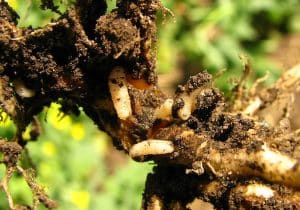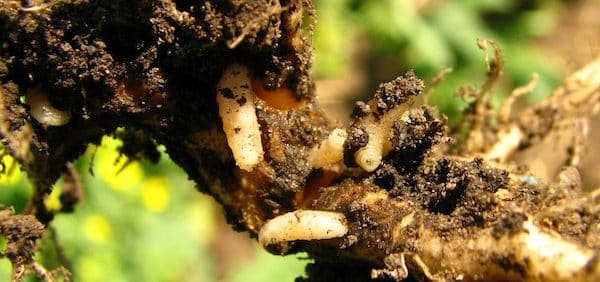Root maggots have been found at high numbers in some fields. They can be more common when fields receive a lot of moisture at root elongation stages. Look for plants wilting at early flowering. General wilting is likely environmental, but patches or individual plants could have some other cause. Dig them up carefully and look at their roots for clubroot galls, root diseases and cabbage root maggots.

Maggots boring into taproots can be an entry point for disease, so you may see both. If the plant taproot breaks off slightly below the soil surface, then root maggots are likely suspects. Look for maggots or tunneling. If the plant is girdled at or slightly above the soil surface, and taproots are not tunneled by root maggots, then a disease is more likely. No insecticides are registered or provide an economic benefit on root maggots. Crop rotation can provide effective management when numbers are high enough to cause yield loss. Maggot damage is often higher with low plant populations.
Note that maggot damage can increase the amount of root rot damage. Click here for more on root rots.

